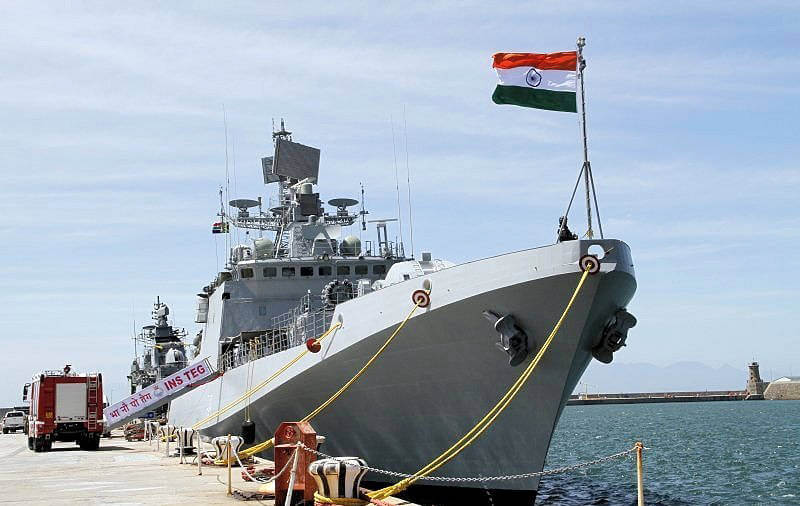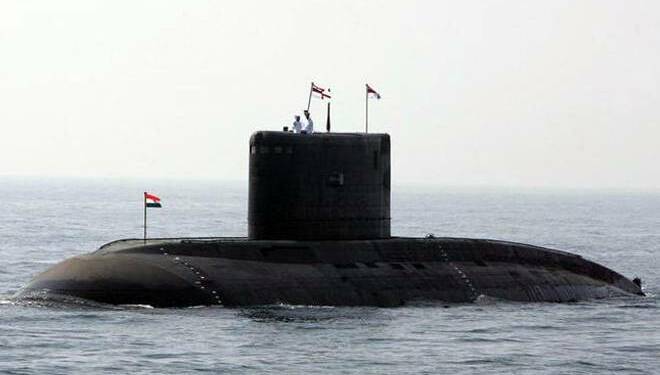China is the epitome of expansionist policies. Beijing does not understand the concept of soft power. Chinese President Xi Jinping wants to dominate the world with intimidation. As a part of his global domination dreams, Xi has been looking to make the Chinese People’s Liberation Army Navy (PLA Navy) forceful and coercive. He has overseen the rise of the huge shipbuilding industry in China, which has inflated the size of the Chinese Navy.
But a huge Navy does not translate into a powerful Navy. In fact, China itself is not even a Blue-water Navy. Presently, the Chinese Navy fails to exercise much influence beyond its littoral zones. In fact, China will never become a Blue-water Navy, because India’s deadly nuclear submarine programme is bound to stonewall Xi’s Blue-water Navy ambitions.
If China has to achieve its goal of becoming a Blue-water Navy, it will have to exercise considerable influence outside the Western Pacific region. In fact, Beijing has made several attempts to become influential in the Indian Ocean Region (IOR), which is otherwise considered India’s sphere of influence.
Entering the IOR, however, remains an uphill task for the Chinese Navy. There is a big obstacle in the way of Chinese vessels called the Strait of Malacca- a narrow, strategic chokepoint joining the Indian and Pacific Oceans. The Chinese Navy has time and again tried to breach this obstacle, albeit unsuccessfully as the Indian Navy guards the Malacca Strait closely.

The Indian Navy is using its world-class submarines which do not let any Chinese vessel pass through into the IOR without getting scrutinised.
Here is the real deal- India’s defence industry has managed to put together a brilliant nuclear submarine programme. The nuclear submarine firepower of the Indian Navy is, of course, led by the two Arihant-class ballistic missile submarines (SSBNs). The lead boat- INS Arihant (S2) was commissioned into the Indian Navy in 2016 and a second boat, INS Arighat (S3) is expected to join service with the Indian Navy later this year.
You may wonder what is so special about these nuclear submarines. Well, the Arihant-class submarines are some of the most secretive nuclear-powered submarines across the world. Few submarines have been less photographed than these two SSBNs. Photographs, if any, are many years old.
The Arihant is described as a ‘pocket boomer’. It carries only four missile silos, but that does not take away any credit from the industrial achievement of indigenous nuclear submarines. What also makes the Arihant very special is its ability to operate indefinitely under the sea without needing to refuel, until the supplies run out.
India is now expanding its nuclear programme. Last month, the Indian Navy expressed its willingness to procure six more nuclear submarines, a move which will augment India’s strength when it comes to operating stealthy submarines in order to check growing Chinese aggression.
India wants to become a world leader in the submarines sector. Firstly, it helps India in guarding the Malacca Straits closely and choking the Chinese Navy in the strategic region. And secondly, it also helps India in emboldening China’s regional rivals. Last year, for example, India gifted a submarine to Myanmar. Do not be surprised, if India decides to export submarines to countries like Vietnam, Malaysia, the Philippines and Indonesia a few years down the line.
As such, Xi harbours the dream of making China a powerful, Blue-water Navy but India’s nuclear submarines are creating a formidable front that will never let China cross its littoral zones.






























